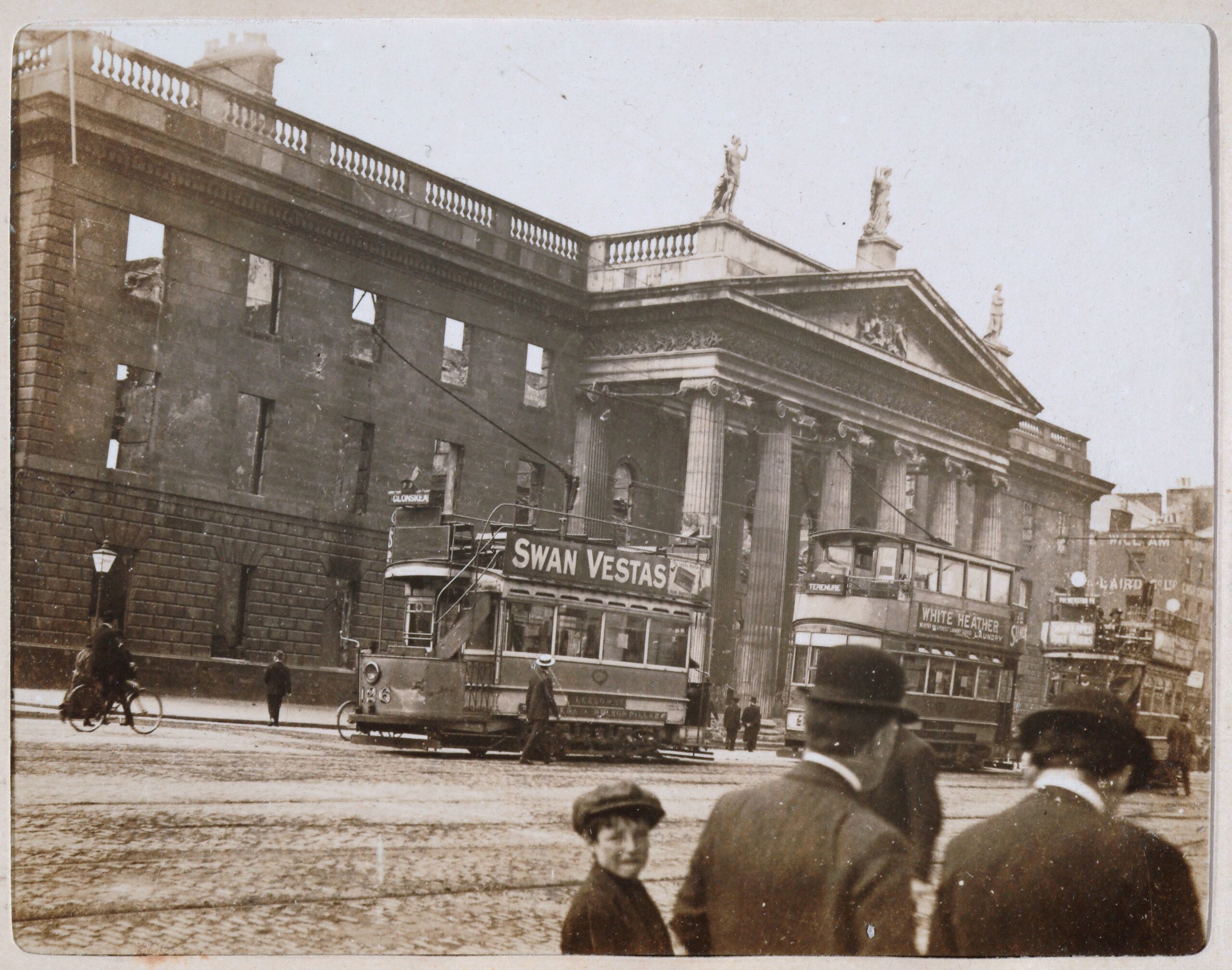The fourth blog in our #DRI10 series celebrating ten years of DRI looks back at foundational DRI collections that were deposited in DRI and helped to shape the requirements and policies of the Repository in its early stages.
The Digital Repository of Ireland (DRI) was formed ten years ago in September 2011. It was originally funded through a PRTLI (Programme for Research in Third-Level Institutions) Cycle 5 funding grant. In this phase (2011-2015), DRI was built by a research consortium of six academic partners. It was officially launched in June 2015 and continues to be managed by three core academic institutions – Royal Irish Academy, Trinity College Dublin, and Maynooth University. To mark our ten-year anniversary, DRI staff members are writing a blog a week focusing on different DRI milestones achieved over the past ten years. This is the fourth blog in the #DRI10 celebratory blog series.
The original grant that funded the development of the Digital Repository of Ireland (DRI) included funding for several demonstrator projects. This funding allowed organisations to digitise and catalog interesting collections that would be deposited with DRI before our public launch in 2015. The organisations associated with the demonstrator projects did much more than simply provide content, however, being heavily involved in DRI cross-function meetings and helping to define the use cases, requirements, and policies of DRI.
Each demonstrator collection presented its own unique challenges, helping DRI to develop a comprehensive solution that would meet the needs of a range of different organisations and collections.
Maynooth University and the Irish Qualitative Data Archive’s Irish Lifetimes collections contained a considerable amount of personal data, so this data was used as a test case for issues such as anonymisation and access restrictions.
NUI Galway and RTE Radio na Gaeltachta had several Irish language collections, thus helping us to develop a bilingual repository, which not only supports bilingual digital assets, but also bilingual metadata.

Image: Bilingual metadata from the Bailiúchán Raidió na Gaeltachta (Seán Mac Giollarnáth) collection
The Library of Trinity College Dublin’s Clarke Stained Glass Studios Collection was catalogued using the Metadata Object Description Schema (MODS) metadata standard, while the National Irish Visual Arts Library’s Kilkenny Design Workshop collection used the Encoded Archival Description (EAD) standard. This allowed us to develop and test support for the most widely used metadata standards in use by memory institutes in Ireland.
The Letters of 1916 collection paved the way for a wealth of content related not only to 1916 but the whole Decade of Centenaries which has subsequently been published.
Several of the demonstrator projects were keen to host their own websites to showcase their collections as well as preserving them in DRI, and this gave us the opportunity to develop and test an Application Programming Interface (API) which external websites and apps can use to access the images and metadata from DRI.
After our official launch in Croke Park in 2015, we began working with new collections that hadn’t been part of the demonstrator projects. One early collection that garnered a lot of attention was Photographs of Dublin City Centre after the 1916 Rebellion, deposited in DRI by the Royal Irish Academy Library (RIA) in July 2015.
The forty photographs in this collection, taken by antiquarian Thomas Johnson Westropp (1860-1922), document key buildings, monuments, and streets in Dublin in the aftermath of the 1916 Easter Rising. Westropp donated these photographs to the RIA in June 1916, just weeks after the events of the Rising unfolded. A copy was also deposited with Trinity College Dublin at the time.
The RIA Library had already digitised the photographs and had been presenting them in online collections, but depositing them in DRI allowed the Library to ensure that these important digital images would be preserved in the long term.
DRI launched a press campaign around the collection, sending press releases and photographs to many media outlets, which resulted in coverage in the Irish Times and other outlets.
Significant images in the collection included views of O’Connell Street, partially in ruins, from Nelson’s Pillar, and an image of a Dublin tram going past the General Post Office, with a small boy looking at the camera in the foreground. The collection struck a chord with many viewers precisely because of that combination between the architectural, political, and personal visible in the photographs.

Image: Westropp, Thomas Johnson, MRIA (1860-1922). (2015) General Post Office, flag staff at corner, May 17 [1916], Digital Repository of Ireland [Distributor], Royal Irish Academy [Depositing Institution], https://doi.org/10.7486/DRI.3b591864x
We’ve come a long way from these early collections, with almost a hundred published collections. We hope you enjoy exploring them at https://repository.dri.ie/.
By Kathryn Cassidy, DRI Software Engineer, and Clare Lanigan, Digital Archivist and Coordinator





